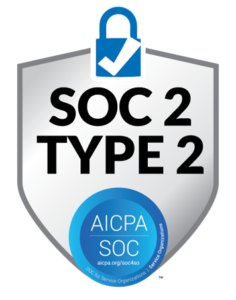Lou Cerny, from our partner Sedlak Supply Chain Consultants, authored the following blog post around the speed to value with a Labor Management System System (LMS). A LMS is the key foundational software tool to support a labor management program which in turn will result in a high-performance culture. With today’s LMS solutions, installed as a cloud-based service, there is no requirement for a significant capital investment, no need to contend for budget dollars with other major projects, and an ROI that makes a LMS compelling and an obvious candidate for prioritized action in any organization. An engaged, informed and well- rewarded workforce is the key to higher productivity in any warehouse operation. A LMS is the key solution to enabling this set of behaviors and values that will improve the work experience for the associates and improve customer satisfaction.
To learn more about the TZA ProTrack LMS visit www.tza.com
If you have any question about TZA’s ProTrack LMS, Contact John Seidl at jseidl@tza.com
If, like many of your counterparts, you are faced with the challenges of finding and keeping a motivated labor force, while reducing costs and meeting executive expectations, time and capital are not your friends.
Finding and retaining a motivated workforce is the number one issue that is facing supply chain professionals today. While COVID-19 is in the rear-view mirror, its impact on the workforce remains.
How many investments can:
- Be implemented in six months or less?
- Pay for themselves in under a year?
- Improve productivity?
- Help reduce turnover?
- Help attract and retain high-performing associates?
- Provide timely and accurate performance and financial data across multiple sites?
A Labor Management System System is one of the easiest ways to achieve all of these!!
We will discuss these points in more detail below.
A 6-month or less implementation with limited IT resources
Many of the available LM systems have the ability to be implemented in 60-90 days. Today, for simple operations you can create data determined labor standards to fast-track your implementation. More complex operations may still require engineered labor standards based on an operational study and observation but even those can be done efficiently utilizing tools and templates provided by the LMS vendor. If you would like to include ELS all the systems can incorporate those either initially or over time. Since these systems typically have standard interfaces with most WMS systems the impact on your IT resources is minimal.
Under 12-month payback
The business case for an LMS is easily achieved. Factors that all help build the case include:
- 8-15% increases in productivity
- Reduced managerial and clerical time required to gather data and identify associates who need coaching
- Reduced turnover and the resulting cost to find and onboard new associates. This hiring and training cost can be thousands of dollars for each position you need to fill/replace.
Achieve a high performing motivated workforce
A LMS assures that your associates clearly understand:
- What is expected of them
- That their hard work is being recognized and appreciated
- That they will see the financial benefit in their compensation through a self-funding incentive program
- With the help of the system-generated reporting, that lower performers will be identified early and will receive prompt training to provide the best opportunity for them to grow with the organization.
- That a prolonged inability or unwillingness to perform at the minimum level of expectancy will result in a defined accountability approach.
Great reporting and financial planning data
Due to the large amount of data the LMS gathers and analyzes, the reporting capabilities are virtually unlimited. The LMS can provide comparative costing data by function, by area, by facility, by customer, and much more. The drill-down capabilities provide granular details while also providing executive-level summaries. Think about how this can benefit you in your planning and budgeting process!
Getting started
It’s never too early to get started. The majority of an LMS installation is behind the scenes and has very little impact on management’s time until training starts which is typically about 10 hours per manager. Think about the continuation of managing your team as always, but with real-time data and better processes. The LMS generates real savings from day one in the form of reduced labor costs and improved operational productivity. It’s a relatively seamless transition and a clear priority for any program.
Here are some points to consider as you move through the process:
Follow the Money
While it is desirable to ultimately get your entire workforce on the system, the old adage “follow the money” can certainly be applied. Identify the most labor-intensive areas in your operation and begin by implementing them first. In general, picking and packing often account for 60-70% of your fulfillment labor. By attacking these areas first, you can have the greatest impact on cost, reduce implementation time and cost initially and set the stage to roll into the other areas. Based on the success experienced b the associates in these initial areas, you may well see that other functional areas are now looking forward to being brought into the system and receiving the recognition and potentially the compensation for the effort they are providing. This approach can often save approximately 2 months required to develop and verify all additional engineered standards.
In speaking with John Seidl from our partner TZA he stated “Today’s warehouse associates thrive in an environment where competitive measurement is part of their performance evaluation. They also place a significant amount of value on the real time feedback that is enabled by the Labor Management System System.”
Capture the Low-hanging Fruit
There are several components that drive the savings from a labor management program These include:
Replacing Poor Practices with Optimized Methods
Prior to implementing any LMS, it is recommended that you take the time to review the various tasks and ensure the methods are optimized. This is best accomplished through a Lean best practices approach involving both your area managers and select hourly associates from that specific activity in the operation. The process is to review every step in the process identifying “waste” and ultimately defining the best practice. Once the “standard operating process” (SOP) is defined, it is presented to the floor and monitored to assure everyone is following the optimum process. Have a defined SOP can provide significant improvements (3-10%), especially if it has been several years since this was done.
Identifying and eliminating non-recorded time
Capturing how an associate spends their day identifies negative impacts on their productivity. Utilizing continuous task tracking will identify the amount of non-productive time. Making the associates aware of their performance as compared to their contemporaries can often result in 3-5% increases in overall performance. This can be accomplished within the first 30-45 days of the integration.
Don’t forget the need to include Change Management
Selecting and implementing a LMS is a fairly straightforward process. However, ensuring that it is properly introduced, understood and embraced by your associates is a critical requirement to achieve success. Remember that while most people say they want change, few actually do. A well-planned and communicated Change Management process will eliminate the fears, optimize the implementation and ensure questions and concerns are addressed proactively.
Don’t be afraid to ask for help
Exploring the various systems and selecting a LMS partner requires significant due diligence. Sedlak has the experience to partner with you and your LMS provider from the selection through implementation process to assure project success.
If you have questions about selecting and implementing an LMS, Contact Lou Cerny at lcerny@jasedlak.com
Be sure to visit our website for other blogs and videos from our previous virtual events.
For this year’s Virtual Event Series Balancing People, Systems and Automation, sponsored in part by TZA, register below.
https://site.pheedloop.com/event/sedlak2023/home/?tickets=TIC63XU2VTT


